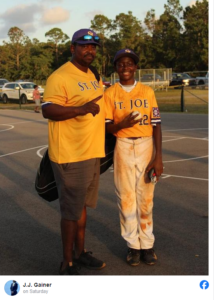Born on September 29, 1931, in Malmö, Sweden, Anita Ekberg grew up in a modest household as the sixth of eight children. Though her early years gave little hint of the international fame that awaited her, her striking beauty set her apart from an early age.

Her journey to stardom began in 1950 when she won the title of Miss Sweden. While she didn’t take home the Miss Universe crown, her participation in the pageant proved to be a turning point. The exposure brought her to Hollywood, where her captivating presence quickly caught the eye of industry insiders. This newfound recognition opened doors in modeling and acting, setting the stage for her entertainment career.
Breaking into Hollywood

Ekberg’s Hollywood debut came in the mid-1950s with supporting roles in films such as Blood Alley (1955), where she appeared alongside John Wayne and Lauren Bacall, and the comedy Artists and Models (1955), starring Dean Martin and Jerry Lewis. Her Nordic beauty and statuesque elegance earned her the nickname “The Iceberg,” reinforcing her image as a classic Hollywood bombshell. Popular media, including Playboy, frequently featured her, further cementing her status as a pop culture sensation.
La Dolce Vita and Global Stardom

However, it was her role in Federico Fellini’s La Dolce Vita (1960) that made her an international icon. Her portrayal of Sylvia, the enchanting yet elusive starlet, captured the essence of celebrity allure and mystery. The film’s most legendary moment—Ekberg wading through Rome’s Trevi Fountain in a flowing black gown—became one of the most enduring images in cinematic history.
Despite the worldwide recognition La Dolce Vita brought her, the role also led to typecasting, with many directors offering her parts that emphasized her glamorous persona. While this limited her opportunities for more diverse roles, Ekberg embraced the fame it afforded her, understanding the power of the image she had cultivated.
Life in Italy and Career Beyond Hollywood

Choosing to remain in Italy after her rise to stardom, Ekberg found greater creative freedom outside Hollywood’s constraints. She appeared in notable European films such as Boccaccio ’70 (1962), an anthology featuring works by Fellini and Vittorio De Sica, and 4 for Texas (1963), where she reunited with Dean Martin and Frank Sinatra. Though filmmakers often cast her in roles that leaned into her seductive image, she maintained a strong presence in European cinema, solidifying her legacy as a screen siren of her era.
18-Year-Old Football Star Chance Gainer Collapses on Field: Heartbreaking Details Unveiled
A high school football game in Florida ended in tragedy when an athlete collapsed during the game and later passed away.
The local community is deeply shocked and saddened by the event. Chance Gainer, an 18-year-old student and standout player from Port St. Joe High School, lost consciousness on the field while playing against Liberty County High School. Despite the quick response from medical staff, he was pronounced dead at a nearby hospital.

Gulf County School Superintendent Jim Norton said that when emergency responders first arrived, Gainer had no pulse. However, they were able to revive him before he was taken to the hospital in an ambulance. Unfortunately, he passed away after arriving at the clinic.

Liberty County Athletic Director Tim Davis, who was there at the time, shared more details about what happened after Gainer was taken away. “We got the news about an hour later that he had passed away. The game had about four minutes left in the fourth quarter, so we decided to finish it. This way, the Port St. Joe coaches could tell the players together,” he said.
Gainer’s death has deeply affected the Port St. Joe community. He was not only known for his impressive athletic skills but also for his kind and quiet nature. Norton described Gainer as an outstanding athlete and person, praising his “world-class speed” and even better personality.

The young athlete, who had a GPA above 4.0, had recently visited Vanderbilt University to explore college options. “This is the most heartbreaking situation,” said Superintendent Jim Norton on Saturday. He also asked everyone to keep Gainer’s parents and loved ones in their thoughts and prayers. On the same day, Port St. Joe High School opened its doors to allow the community to gather and mourn Gainer’s passing. Grief counselors were brought in to help students, staff, and the football team cope with the loss. The upcoming football game against Blountstown, scheduled for next Friday, has been postponed.
Many people had kind words about Gainer. Principal Sissy Godwin described him as “a very sweet young man” whose smile could light up any room. Football coach Tanner Jones called him “feisty” and noted his ability to “determine the outcome of games.” His friend Kolten Johnson remembered the moment he found out about Gainer’s death. He knew “something was wrong” when his mother started crying and told him the news after the game. Johnson said Gainer was “an amazing football player, an amazing friend, a great kid to be around.”
The news spread quickly on social media. The Florida High School Sports Athletic Association extended its condolences to Gainer’s family, friends, and the Port St. Joe community. One user wrote, “No mother should have to bury their child. I’m sending my deepest condolences and prayers to his family. Rest well, Chance Gainer.” Others also expressed their sadness and concerns. One person added, “It is heartbreaking. The safety of young athletes should be our primary concern in sports. The recent tragedies have shocked and saddened the entire community.”
To honor Gainer, the Gulf County School District has planned several events. A local pizza place donated pizzas for Monday’s lunch to give Gainer’s mother and aunts time to mourn. All schools in the district will be closed on Tuesday, and there will be a luncheon for athletes and coaches. Normal classes will resume on Wednesday. There is also a planned event called “Celebration of Life” on Saturday the 14th, though details are still being finalized. Our deepest condolences go to the Gainer family and the Port St. Joe community during this difficult time. Rest in peace, Chance Gainer.



Leave a Reply